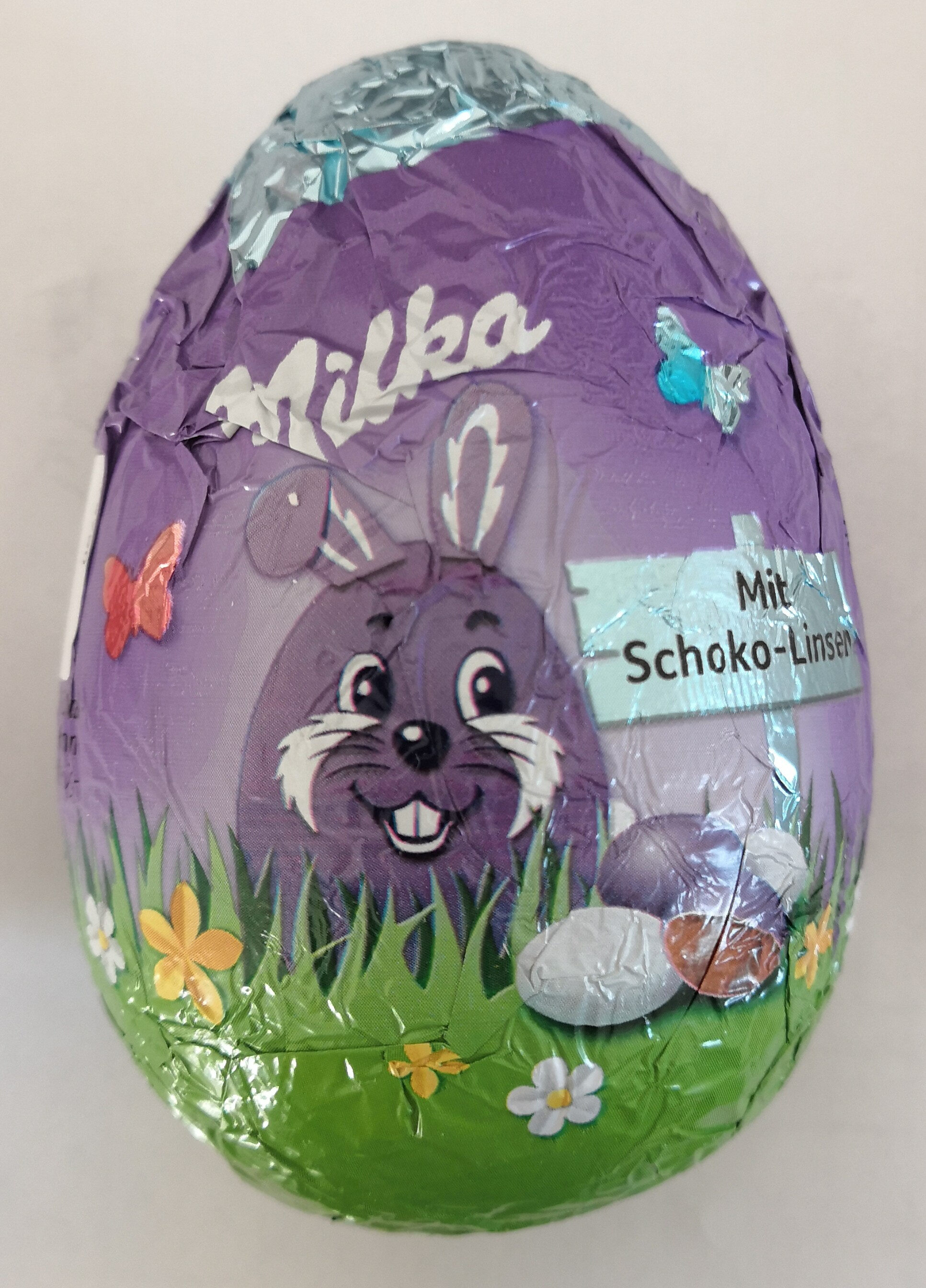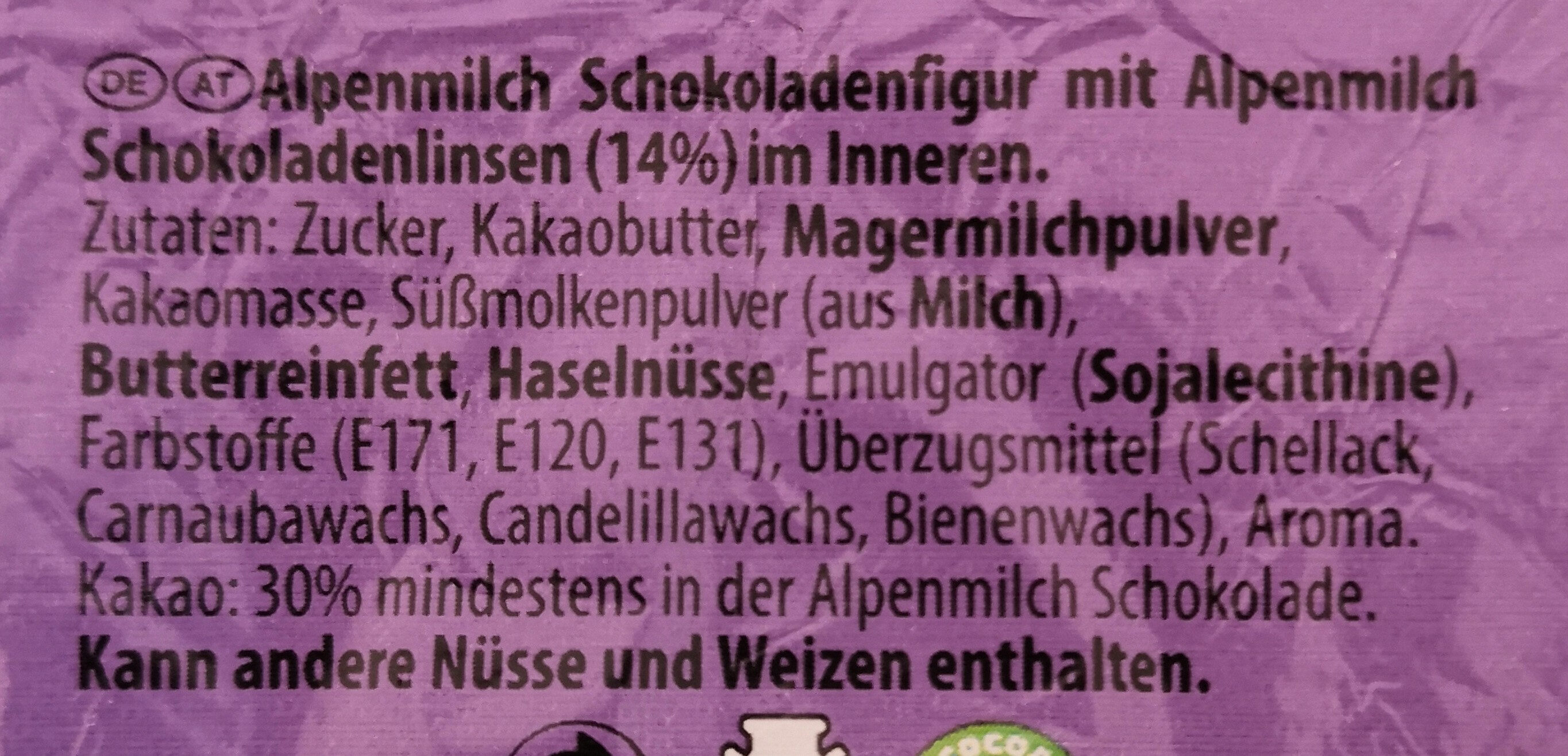Milka Ei mit Schoko-Linsen - 50 g
This product page is not complete. You can help to complete it by editing it and adding more data from the photos we have, or by taking more photos using the app for Android or iPhone/iPad. Thank you!
×
Barcode: 76224140
Quantity: 50 g
Packaging: Metal, Recyclable Metals, Aluminium, de:Alufolie
Categories: Snacks, Sweet snacks, Cocoa and its products, Chocolates
Labels, certifications, awards:
Cocoa Life, Green Dot

Stores: NETTO
Countries where sold: Germany
Matching with your preferences
Environment
Packaging
Transportation
Report a problem
Data sources
Product added on by predatorix
Last edit of product page on by frank4711.
Product page also edited by kiliweb, openfoodfacts-contributors, packbot, roboto-app, yuka.sY2b0xO6T85zoF3NwEKvlm99TcPGh2PrHh3tt1yx3syAdp_PftNM5or9aqs.
If the data is incomplete or incorrect, you can complete or correct it by editing this page.










